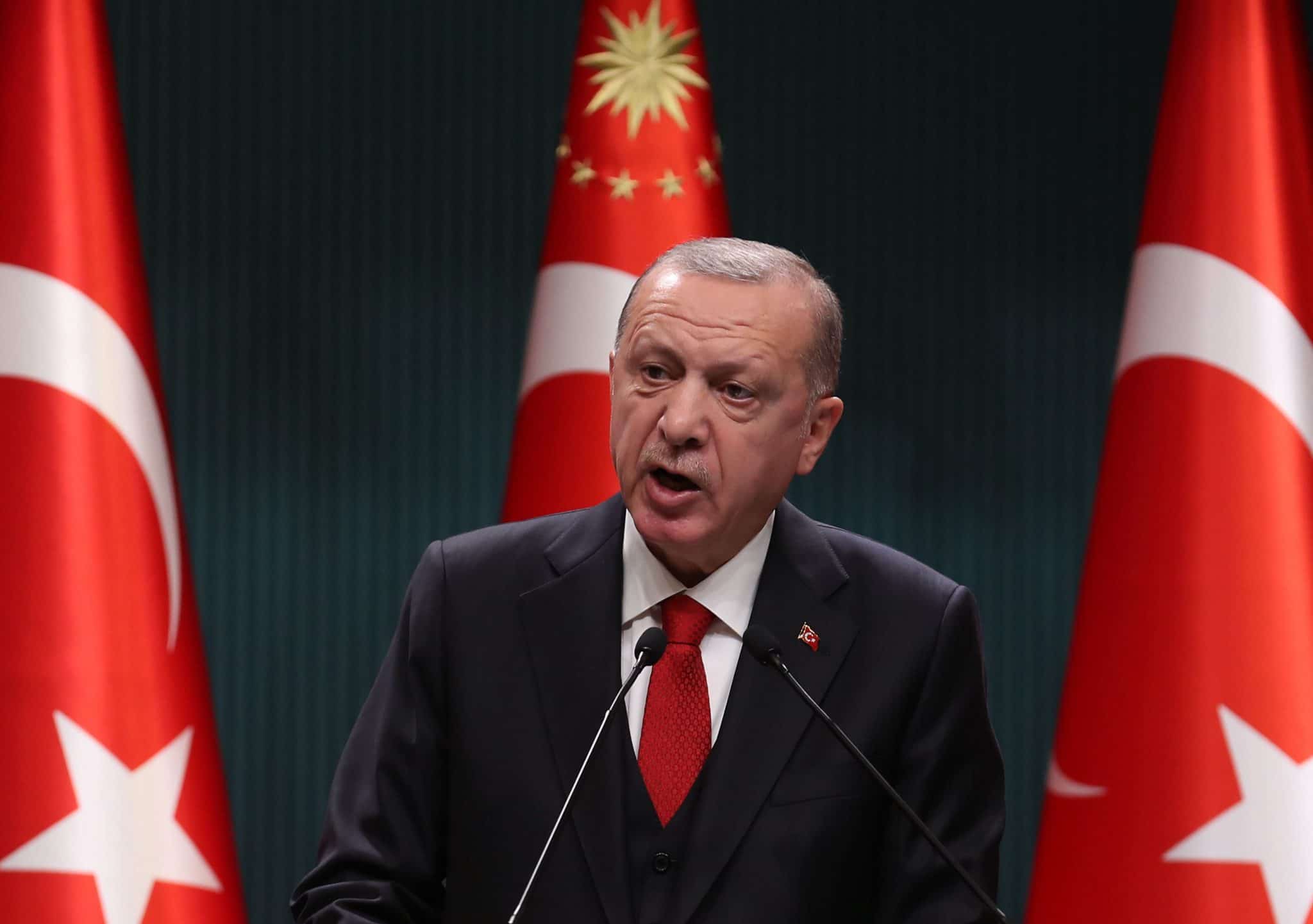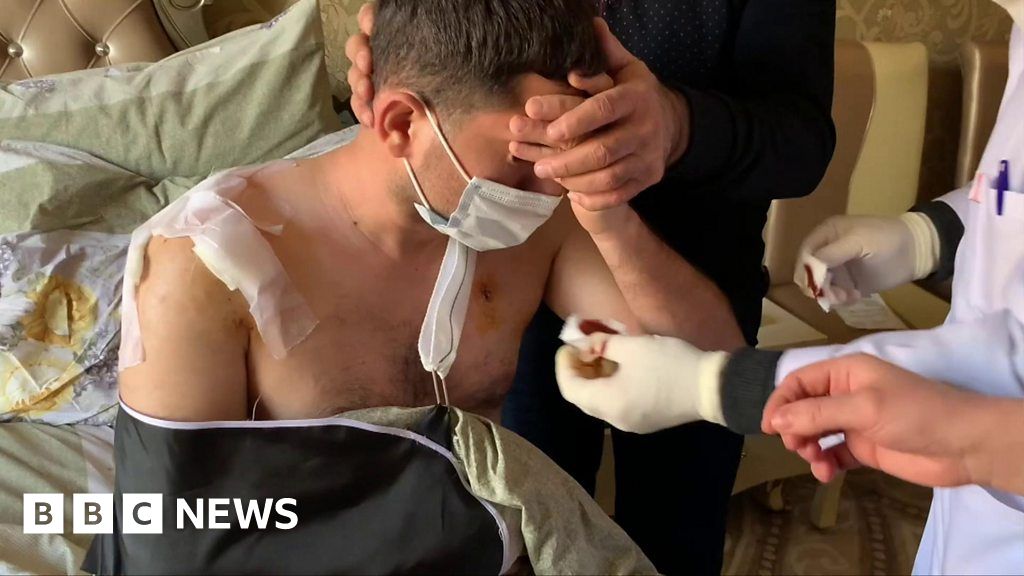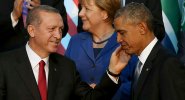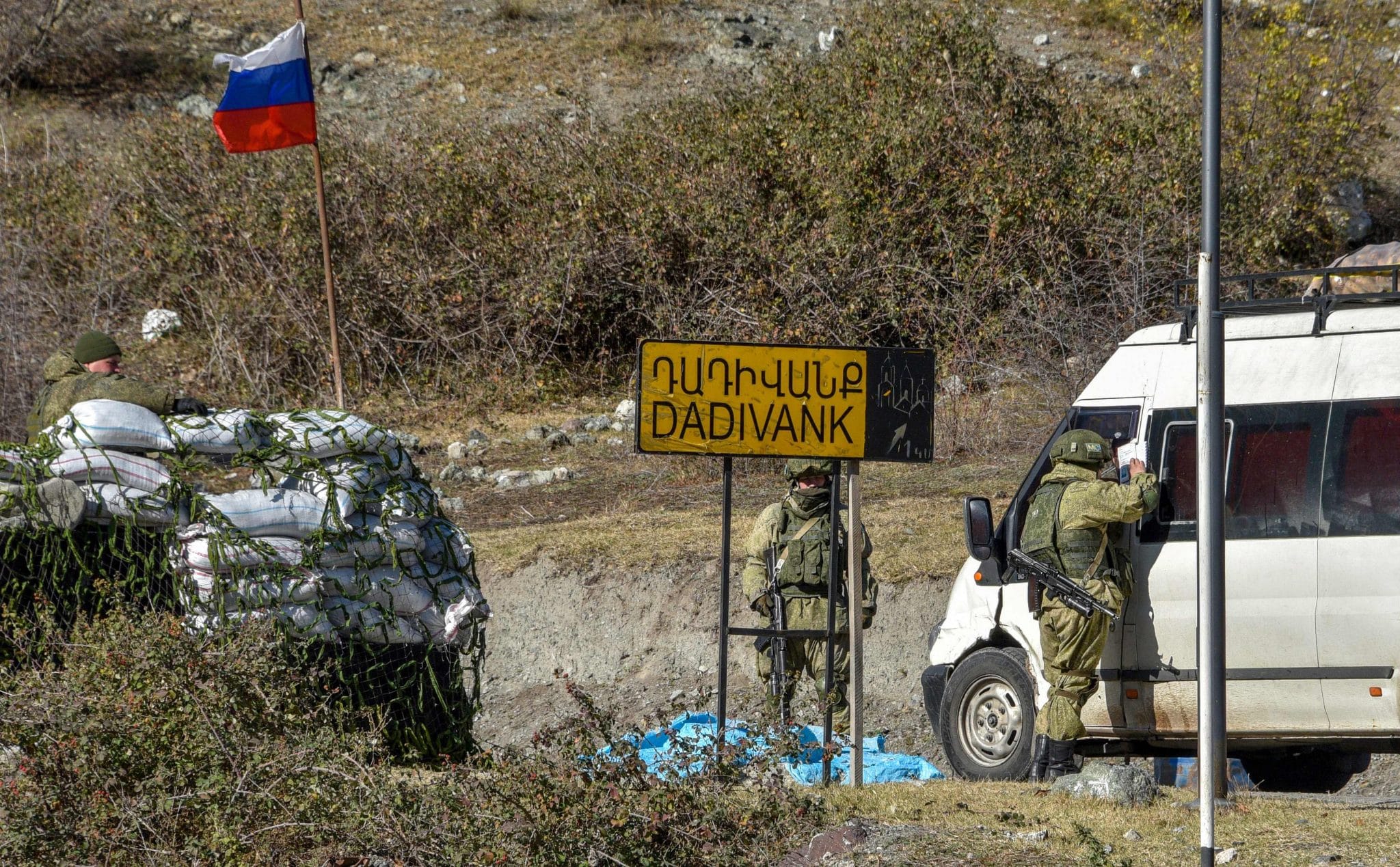Who Tied Boyd's Loop
23. Examples at the strategic and operational levels of the Karabakh theater of operations illustrate the concept of "Boyd cycles", as well as "Boyd's loop" - the position of the American military theorist of our time. This concept is expressed in a looped sequence: observation - orientation - decision - action. Within this sequence, Azerbaijan, due to its technical superiority, was ahead of the Armenian side.
24. Accordingly, the attempts of the Armenians to lure the Azerbaijanis into traps at the operational level (to retreat and flank, encircle and defeat - as in the Jebrail battle on October 10-11, the Zangelan battle on October 20-21, 2020), led only to defeats, high losses , loss of territory and combat capability of units, but did not knock down the pace of the enemy's offensive. On the contrary, they only grew. On the flat terrain of the Gayan steppe, the Armenians should have completely abandoned such a course of action. In the battle of Jebrail alone, the Armenians suffered high and largely unnecessary losses, which turned out to be critical in the scale of the forces involved - an estimated two to three thousand killed and wounded in two days of fighting.
25. Attention is drawn to the activities of the Azerbaijani General Staff, which, it is possible, were carried out with the direct supervision and consultation of Turkish colleagues. In contrast to the rather stereotyped and predictable actions of Armenian opponents, the Azerbaijanis acted flexibly and outside the box. For example, in the case of the breakthrough through the Horadiz corridor: it was not an advance into the depths of the Geyan steppe that followed, but first of all actions to expand the "neck" of the breakthrough towards Hadrut and Fizuli in order to avoid Armenian counterattacks from the flank, under the base of the breakthrough.
In order to combat the enemy fortified areas, not a direct assault on them was carried out, but first the squeezing of mobile groups of light mountain infantry and only then decisive actions. Shusha is the apotheosis of such mental activity. Passing through difficult terrain to the central fortified object of the attack without proper air support, with a series of distracting attacks on the M-12 highway between Lachin and Shusha, followed by a general assault and the occupation of Shushi itself, a heavily fortified and inaccessible position.
26. The losses turned out to be huge, primarily for the Armenian side. In a day, the parties lost over a hundred people only killed. Armenian politician Mikael Minasyan said that the Armenian side lost 4,750 people as a result of the war. This could mean 20-25 thousand wounded, plus several dozen Armenians were captured. That is, the Armenians gathered up to 80 thousand armed soldiers in NKR, and of them 25-30 thousand were lost (30-40%, a very high proportion; after deducting losses, there were about 50 thousand fighters mentioned above). First of all, this was due to the huge qualitative and quantitative superiority of the enemy and a series of lost battles.
Azerbaijani losses were, apparently, comparable - in the range of 4,000-4,500 people only killed - since at the beginning of the conflict Azerbaijan suffered great damage by storming the "Ohanyan line", and later Azerbaijani troops were repeatedly ambushed and suffered losses, fortified positions.
Light Mountain Infantry tactics
27. In the conditions of the mountain war, heavy equipment inevitably found itself tied to road communications and various mountain passes - gorges and valleys. Under these conditions, the maneuver of the sides by "heavy" units in the theater of operations was limited and predictable, and the throughput of these communications was limited. In such a situation, the ability of "heavy" units to deliver surprise strikes and counterstrikes inevitably ran into these limitations. This became especially important for the side, which was technically in a losing position and was forced to seek out asymmetric methods of counteraction. In particular, the Armenian columns often arrived at the deployment lines for a long time, as a result of which the intention to launch a counterstrike was revealed, often long before the moment of readiness, and was parried. In addition, the troops as a result of this became vulnerable in narrow mountain passages and fell under fire damage, and also fell into ambushes.
28. With the impossibility of using large masses of troops with heavy weapons, the tactics of light mountain infantry with portable weapons, special training and equipment became relevant. Troops capable of moving and taking positions in difficult terrain. This is a tactic of infiltrating mobile groups in complex rugged terrain, not relying on the deployed transport system used by the Chinese of the 14th Army and the PLA special forces during the Kokang war in Burma (Myanmar) in 2015, illegal armed groups (IAF) in Chechnya in 1994-1996 and 1999-2005, as well as militants in Syria.
29. Apparently, it was for this purpose that several thousand appropriately trained Syrian fighters were brought in and used in Karabakh by the Turks, and the Azerbaijanis themselves used all their possible special forces and all available mountain infantry. Even from the Nakhichevan Autonomous Republic (NAR), a special-purpose battalion was taken out.
30. Mountain infantry, armed with light small arms, light mortars, ATGM and MANPADS, as well as recoilless guns, could occupy the slopes and tops of mountains and, moving along the ridges, break through enemy defenses in hard-to-reach places, get out of the way of communication, make rounds and to set up ambushes, adjusting the fire of artillery, UAVs, MLRS and OTRK, to advance to important targets behind enemy lines (which, in fact, happened on November 6-10, 2020 near Shusha).
31. The tactics of the Armenian side relied on the old cumbersome system of fortified areas and massive marching columns, was unable to allocate a sufficient number of mobile rapid reaction groups and was almost powerless against enemy actions. It was, in fact, a tactic of passive defense and reaction to the actions of the adversary owning the initiative, when much more resources were spent on counteraction than on the action itself. Even the knowledge of the area was not very helpful: the Azerbaijanis and the Syrians under their control often set up ambushes themselves, caught Armenian detachments, as, according to some reports, happened near Shusha in early November, when more than a hundred Armenian servicemen and militias were destroyed in one such battle.
32. However, the prospect of using light mountain infantry was limited by the difficult terrain, as well as the need to supply these units. Accordingly, decisive strikes were delivered to a shallow depth, after which the groups stopped and waited for resupply. This was the reason for the low rates of advance of the Azerbaijani side in the mountainous and foothill areas, near Hadrut on October 10-18, and near Shusha in late October - early November. Under the Red Bazaar, Martuni and Lachin, there was a stall at all.
33. In fact, the algorithm for the advancement of Azerbaijani troops in the mountains looked like this: the occupation of mountain peaks and ridges of mountain ranges - ensuring, when interacting with artillery and UAVs, positions and mountain roads - pulling up columns with heavy equipment and artillery - occupying the object of attack - rest and stockpiling - again moving forward along the same lines. Thus, each such stage took place at a shallow depth, literally several kilometers, after which there was inevitably a stop.
War at a distance
34. At the tactical level, the success of the actions of the Azerbaijani side, in addition to the use of light mountain infantry, was also conditioned by the use of a combination of UAVs and self-propelled artillery. Interaction was provided by satellite navigation (Azerbaijanis created a space center in Baku and launched their first space satellite in 2013 with the support of the France). At the same time, the scale of the use of attack drones remained relatively small: some Bayraktar UAVs were in the sky, according to various estimates, 8-15 units (this is not much), not counting the “loitering ammunition” drones and others. Correction and target designation (TS) was supported by both satellite navigation and sabotage and reconnaissance groups (DRG) that had gone into a breakthrough.
35. The neglect of modern and massive unmanned aircraft was the most significant failure of the Armenian side during the war. In fact, the enemy dominated the air and had a picture of the battlefield in real time, while the Armenian side found itself in the "fog of war". Associated with this were the failures of the defenders at the tactical, operational and strategic levels - all levels of military art. Unmanned aircraft began to appear among Armenians only closer to the end of the conflict, while outdated samples were used.
36. The reason for the domination of the UAVs of Azerbaijanis in the air was also the defeat of the air defense: the Armenian air defense systems became a priority target at the beginning of the war. In the future, the resulting imbalance could not be evened out. In addition, the Armenian air defense system was not located and used in the best way and, as a result, had a low efficiency. The unmanned aviation of Azerbaijan, in fact, dominated the skies for most of the conflict, while official Baku used almost no or limited use of its manned aircraft (planes and helicopters).
37. The Armenians used army aviation, apparently, also as interceptors, the same Su-25, but due to the lack of funds, it did not become a way out of the situation. In addition, electronic warfare (EW), bad weather, and smoke from forest fires were used as camouflage (the parties blamed each other for setting them on fire). However, the success of countering the air threat could be ensured only with the integrated, systematic and massive use of these means, as well as with their own unmanned aircraft.
38. The weak and limited use of manned aircraft by Azerbaijan is explained by the desire to minimize the risks of losing expensive samples and pilots in the conditions of a small number of its air group. The choice was made in favor of robotic, remotely controlled equipment (the losses of which were much less critical).
39. It is noteworthy that in the work of self-propelled artillery the Azerbaijanis allocated the Czech self-propelled guns "Dana" (although the Russian "Msta-S", "Pions" and others were also used). In fact, 36 self-propelled howitzers were brought together into a separate artillery brigade, which, moving from sector to sector on the southern front, provided the appropriate results. The Azerbaijani side itself, according to her, purchased the specified self-propelled guns "for the rate of fire and other outstanding tactical and technical characteristics."
It should be noted that the Azerbaijanis did not purchase the 155-mm Firtina self-propelled guns from their main ally, Turkey. Either Baku avoided disunification in artillery calibers, which would be a big problem for the supply chain, or the Turks themselves decided not to transfer this model of weapons.
40. The issue of using artillery in armed conflicts of the future as a key means of achieving victory, capable of inflicting up to 80–90% of all losses in battles, is key. Taking the Karabakh war in 2020 as an example, it may mean a gradual departure from towed artillery in favor of self-propelled, large-caliber (150-210 mm), used from a long distance and often changing its positions, that is, operating as much as possible outside the radius of enemy weapons.
Some war trends
41. The Armenians were unable to start long battles in urban conditions. It should be noted, however, that there are no large cities in NKR, the largest settlement is Stepanakert (55 thousand inhabitants before the war). The basis everywhere is low-rise buildings, without large high-rise buildings and complexes that can serve as defense centers in urbanized areas. Nevertheless, the Armenians surrendered a number of their large settlements without significant resistance (Hadrut, Zangelan), which raises some doubts about the ability to organize an adequate defense in the development. Theoretically, with the proper organization of defense, the Armenians could hold out in Stepanakert for a considerable time. An example is the successful and long-term defense of the Kurds against the Turkish army in the village of Manbij in Syria.
42. The Armenians also neglected the appropriate fortifications on the ground. Despite the fact that there was a wealth of experience to analyze actions against American mountain shelters in Iraq and Afghanistan, Israel against Hezbollah in Lebanon and so on, this experience was never taken into account. The forward positions were poorly and carelessly equipped, there were many vulnerable open positions, and the mining of the approaches was also not carried out properly.
43. Taking into account the recent war in Karabakh, as well as Israel's campaigns in Lebanon, the following development of fortification, capable of slowing down or stalling the movement of troops on the ground, became relevant. The fortifications should look like a system of interconnected underground tunnels, with the possibility of reaching the surface and organizing fire damage from camouflaged closed positions. Mining is still relevant. Reserve lines of defense were required: the Armenians in the rear in the Gayan steppe, despite a number of loud statements and illustrations, as if they did not exist at all.
44. By itself, such positioning is not a panacea. For example, the Americans actively used anti-bunker bombs from long-range strategic aircraft - which, of course, Azerbaijan did not have. In addition, it is possible to fight against the underground shelter system by detonating them with liquid explosives or by exposure to poisonous gases. Nevertheless, this defense format proved to be good, for example, in Lebanon in 2006, when the Lebanese Hezbollah was quite successful in opposing high-tech Israeli forces.
45. The disadvantage of using precision weapons is their rapid depletion. This was the case in Iraq and Libya during the campaigns of Western countries there. This raises the question of ensuring the appropriate production capacity of the military-industrial complex, export substitution, the ratio of price and mass. The same applies to appropriately trained personnel - special forces, UAV operators, and others - whose loss as a consumable material, the inability to replace damage in a timely manner can lead to the deprivation of a number of technical advantages over the enemy and to sliding into war using conventional, standard weapons.
46. The fall military campaign of 2020 in Karabakh showed the previous trend towards a decrease in the role of tanks and the growing importance of UAVs, ATGMs and artillery. Tanks, in fact, turned into a means of supporting the infantry, that is, they returned to the role that was assigned to them in most countries after the First World War. The use of tank subunits at a rank higher than a company (and often a platoon), their massive concentration turned out to be completely unjustified and only leads to an increase in losses.
47. The use of large mechanized and tank masses as a breakthrough tool last proved effective in 2003, during the American invasion of Iraq. But there were quality six-lane highways, flat terrain, and no proper resistance. In addition, the Americans greatly outnumbered the Iraqis - in a number of technical parameters by two generations. And the Iraqis withdrew their troops into the field and dispersed them greatly, without creating defense centers and sufficient operational densities.
Thus, the use of significant tank forces for deep operations is today possible, however, in an appropriate area for this, with a sufficiently developed transport network and subject to an overwhelming qualitative and quantitative superiority over the enemy, which, moreover, is devoid of the possibility of sufficient resistance.
48. The use of long-range and powerful missile weapons and MLRS was also not optimal. In particular, the "Smerch" MLRS from the 41st special artillery regiment of the NKR Armed Forces - Artsakh Defense Army - was stationed in the Shushi region before the war. The rocket attacks on the Azerbaijani cities of Ganja, Terter and others looked more like gestures of despair, as well as terrorist attacks and revenge for a similar fire on Stepanakert. This state of affairs is apparently caused by the lack of target designation among the Armenians, associated with the superiority of the enemy in the sky and the need to operate in the "fog of war". The Armenians, apparently, simply did not know where to shoot, so they acted like Saddam Hussein in the first Gulf War in 1991, striking the enemy's civilian infrastructure. In addition, the Armenian side clearly lacked operational-tactical missile systems with high accuracy and low circular probabilistic deviation (CEP), therefore, the old Elbrus missiles (according to the Western classification "Scud") with high CEP were used.
49. Attention should also be focused on the rather thorough approach of the Azerbaijani side to the information support of the operation. In fact, the deployment of troops went almost unnoticed by the media, and the attack was sudden. This was significantly different even from the situation in 2016, when footage of the moving columns of the Azerbaijani army immediately got into the network, and on some resources the numbers of the units involved and their outfits were discussed. In the first days of the fighting, there was practically no information leakage to the mass media from the Azeris, and then, when the conflict gained "information turnover", the work of the Azeri side on the propaganda field was much more massive and effective than the Armenian. This indicated significant and lengthy preparatory work that preceded the immediate armed conflict.
50. The possibility of organizing a guerrilla war for the Armenian side in the event that Azerbaijanis occupy the entire territory of the NKR seems doubtful. Firstly, during the war, practically no sabotage actions were carried out (the DRG of the Armenians almost did not operate), despite all the knowledge of the area and even in the conditions of the mountainous landscape near Hadrut and Fizuli. Secondly, the Armenians do not have its main resource for the partisan campaign - a large sympathetic population, primarily in rural areas. Already in the first three weeks of the war, most of the pre-war Armenian population of NKR - about 90 thousand out of 150 thousand citizens, 60% - fled to the territory of Armenia.
Lähde -
https://expert.ru/expert/2020/48/karabah-2020-voenno-analiticheskij-razbor/
 .
.





